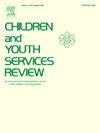治疗性生活故事工作在住家外护理中的评估
IF 1.7
2区 社会学
Q1 FAMILY STUDIES
引用次数: 0
摘要
目的考虑到文献中缺乏有效的干预措施,研究寄宿家庭外护理儿童的治疗方法至关重要。健康和社会护理机构声称,治疗性生活故事工作(TLSW)对经历反复创伤的个人有治疗益处。本文探讨了在住宅OOHC中,TLSW对儿童的有效性。方法共46名儿童(占澳大利亚队列的1.5%)及其关键工作者参与本研究,包括干预组(n = 23)和对照组(n = 23)。在干预结束时,重复恢复力、行为和情绪状态的基线测量。结果干预组在亲社会技能(SDQ)的改善上有明显的显著性趋势(p = 0.055)。这表明孩子们会更多地考虑他人的感受,分享,在痛苦中支持他人,对年幼的孩子友善,并主动提供帮助。此外,情绪和行为问题的临床分值发现,干预组在情绪、同伴和行为问题以及多动症方面减少的可能性要高5%,增加亲社会技能的可能性要高24%。他们似乎也能很好地忍受TLSW,没有参与者中途退出。结论:这些研究结果表明,TLSW的构建使住院OOHC的儿童(通常被描述为治疗抵抗)能够参与这种干预。鉴于政府、研究人员和从业人员之间需要加强合作,为这一群体开发有效的干预措施,为今后评估这种干预措施的有效性提供了研究成果。本文章由计算机程序翻译,如有差异,请以英文原文为准。
An evaluation of therapeutic Life Story Work in residential out of home care
Objective
Research into therapeutic approaches for children in residential out-of-home-care (OOHC) is critical given the paucity of effective interventions in the literature. Health and social care settings claim Therapeutic Life Story Work (TLSW) has therapeutic benefits to individuals who have experience repeated trauma. This paper explores the effectiveness of TLSW with children in residential OOHC.
Method
A total of 46 children (1.5 % of the Australian cohort) and their Keyworkers participated in this study, comprising an Intervention Group (n = 23) and Comparison Group (n = 23). Baseline measures of resilience, behavioural and emotional states were repeated at completion of the intervention.
Results
A clear trend towards significance was evident (p = 0.055) in improved pro-social skills (SDQ) in the Intervention Group as observed by residential Keyworkers. This suggests an increase in children’s consideration of other’s feelings, sharing, supporting others in distress, kindness to younger children, and offering to help out. Moreover, clinical cut-off scores for emotional and behavioural issues found the Intervention Group were 5 % more likely to achieve a reduction in Emotional, Peer, and Conduct problems, as well as Hyperactivity, and 24 % more likely to increase Prosocial skills. They also appeared to tolerate the TLSW well, with no participant dropout.
Conclusion
These findings suggest the constructs of TLSW enables children in residential OOHC, often described as treatment resistant, participate in this intervention. Given the need for greater collaboration between government, researchers and practitioners, in the development of efficacious interventions for this cohort, research learnings are provided for future evaluations into the effectiveness of this intervention.
求助全文
通过发布文献求助,成功后即可免费获取论文全文。
去求助
来源期刊

Children and Youth Services Review
Multiple-
CiteScore
6.30
自引率
6.10%
发文量
303
期刊介绍:
Children and Youth Services Review is an interdisciplinary forum for critical scholarship regarding service programs for children and youth. The journal will publish full-length articles, current research and policy notes, and book reviews.
 求助内容:
求助内容: 应助结果提醒方式:
应助结果提醒方式:


